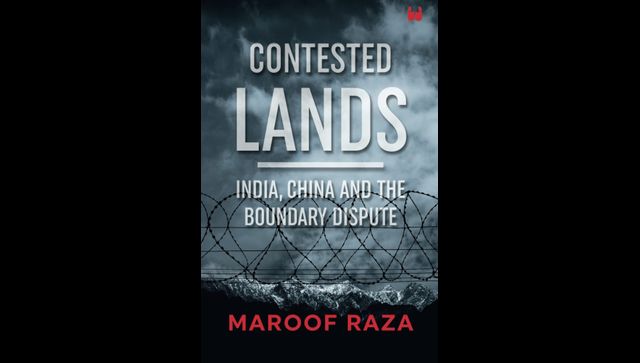Lord Dacre of Glanton, better known among historians as Hugh Trevor-Roper, the one-time distinguished Regius Professor at Oxford, had stated in a lecture in November 1957 that the study of history ought to be useful and controversial. History that was not useful and did not have lay appeal was mere antiquarianism, and history that was not controversial was dead history. Maroof Raza’s Contested Lands examines one of the most dramatic but unfortunate politico-military confrontations between two Asian neighbours in recent times. Although the book cannot be termed to be the work of an academic historian, it is both magisterial and one that permits ease of understanding. Historically tracing the genesis of the conflict in a manner that reveals the dedication, foresight and rigour with which Raza has come to be identified with strategic thought in contemporary India, Contested lands attempts to reveal the reasons for the dissonances that have come to characterise the India-China boundary dispute. The manner in which the author has ably accessed secondary sources and arrayed them with his own frontline experience as a journalist-observer is motivating and is a refreshing addition to serious documentation and analyses of one of modern India’s foremost national security challenges. Divided into nine smart chapters and equal number of maps, Maroof Raza’s latest oeuvre begins its seamless narrative by seeking to “map the territorial lines” and provide a bird’s eye view of the vexed India-China boundary issue. Traversing seven “waypoint” chapters that describe China’s station on the world stage, its expansionism, war with India and post 1962 “strategic intrusions”, the author elegantly delineates the sequence of events that led to the 2020 Galwan incident in eastern Ladakh. However, the two most important sections of the book which stand out in quiet testimony to Raza’s training both as a soldier and as a strategic commentator are the ones on “Delhi’s Weakness” and “A SWOT Analysis”. Therefore, even as the “Strengths, Weaknesses, Opportunities, and Threats” (SWOT) assessment is an impeccable ready reckoner of the manner in which India matches itself militarily with China, in his examination of India’s limitations the author justly reprimands Delhi for its “real failure” for not being able to “match its realpolitik” with a “broader foreign policy framework” that would have witnessed India “formulating a national security strategy or a doctrine”. The prescience with which Raza states that a Kargil-like conflict could well be on the cards unless India is able to create a new mechanism to settle the boundary issue is perhaps the piece-de-resistance of a far-sighted visionary. Indeed, his warning calls are those of a “strategic oracle” who has read the entrails with great care and has devised a well-thought out stratagem which Delhi would do well to heed. Although not spelt out unequivocally in the book — a detailed policy prescription would be in order for the next edition of Contested Lands — Maroof Raza’s contention, during the course of a recent panel discussion, that India walks the extra mile and considers the formulation of an “as-is-where-is” basis resolution of the boundary with China is sound. A plan by which China is “pressured” into resurrecting Chou-en-Lai’s 1960 “East-West Swap” proposal whereby China keeps everything it possesses in the west and India does so in the east is, therefore, the imperative of the times. Indeed, this reviewer had, on 26-27 August 2014, during the course of an India-China “Track II Dialogue” in which he was a member of the Indian delegation, had proposed that since neither sides would surrender ground, a possible solution could lie in converting the “Line of Actual Control” into an International Boundary (IB). Taking recourse to semantics, the reviewer invented a phrase called the “Line of Amity” which would be an intermediate step before a full-fledged IB comes into existence. To that end, he was of the considered opinion that if unyieldingness is inevitable and continuance of the present state of affairs is the only outcome of protracted negotiations, at least a change of nomenclature that resonates of accommodation could herald a positive mindset change from continual and non-progressive status quo. Replacing the present “Line of Actual Control” and introducing a classification that does not ring of belligerence and permits a step in the direction of a later-day resolution (even by the generation that is to come!) could be a possible way out of the dilemma and may well be a prerequisite for an entente cordiale. Maroof Raza’s Contested Lands succeeds where most other recent works on the India-China boundary dispute failed. This is because of the fact that the book underlines the premise that at the end of six decades of disputation there is a need for matter-of-factness in both the countries. Although Raza seems to lay stress that there has to be “political giants” in order to solve a problem of such a magnitude, his showcasing of the need for pragmatism might well have met Trevor-Roper’s first dictum in full measure. After all, the India-China boundary dispute is not yet a dead history. The reviewer is a well-known conflict analyst and author of several bestselling books on security and strategy. Views expressed are personal. Read all the Latest News , Trending News , Cricket News , Bollywood News , India News and Entertainment News here. Follow us on Facebook , Twitter and Instagram .
Contested lands: Why India should find new ways to resolve LAC tensions in Himalayas
Jaideep Saikia
• February 4, 2022, 16:07:50 IST
According to Maroof Raza, a Kargil-like conflict could well be on the cards unless India is able to create a new mechanism to settle the boundary issue.
Advertisement
)
End of Article